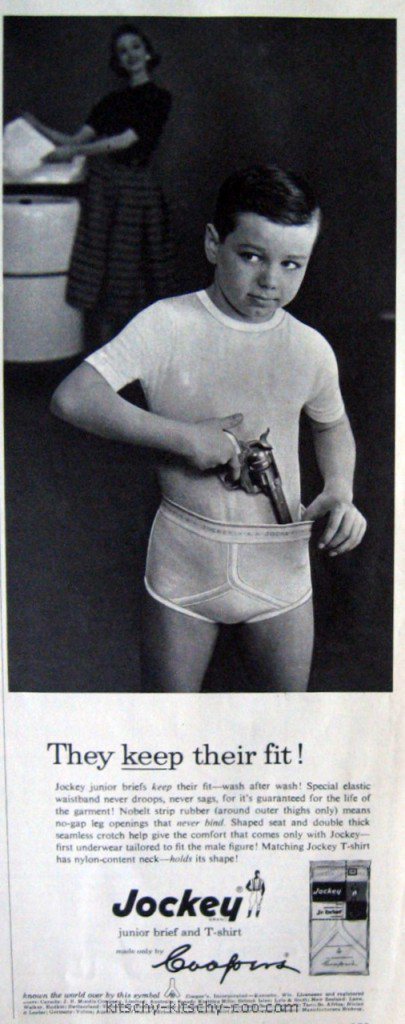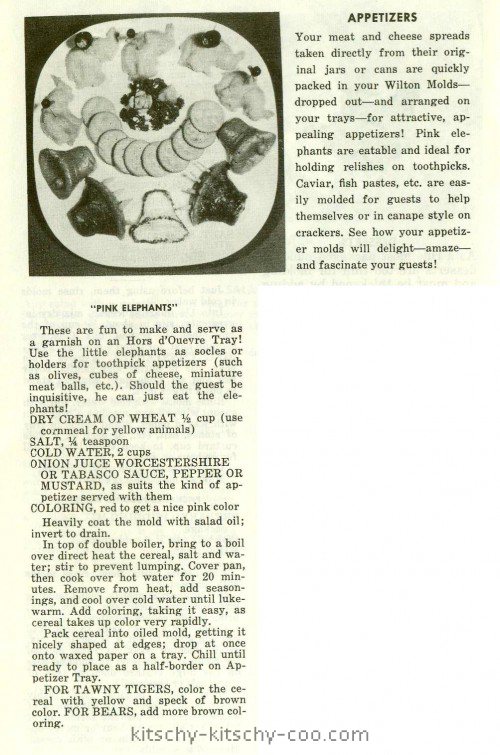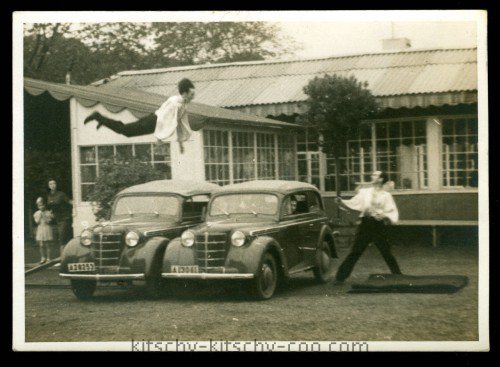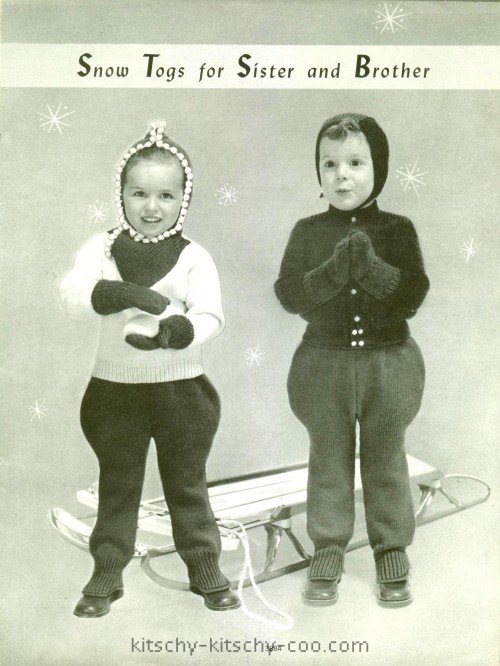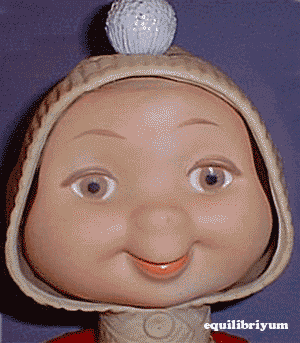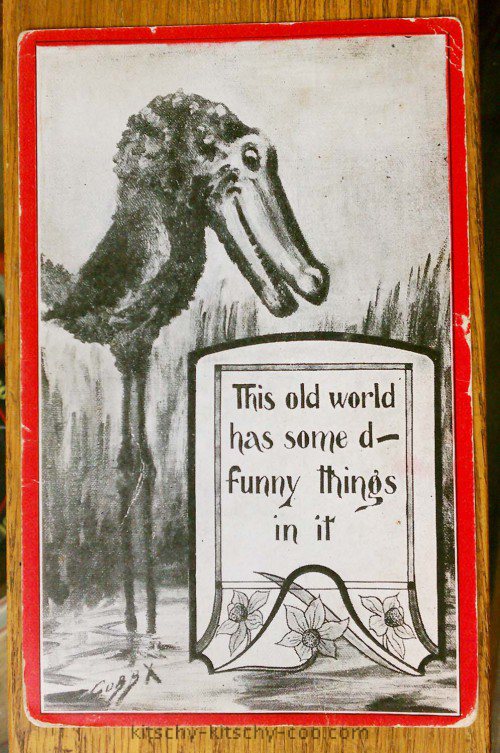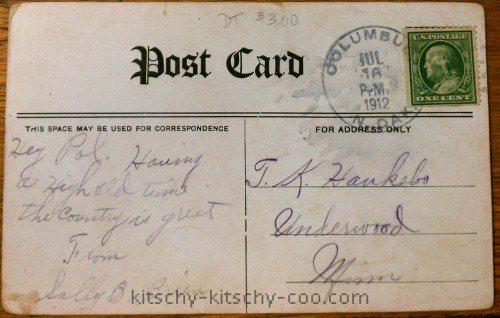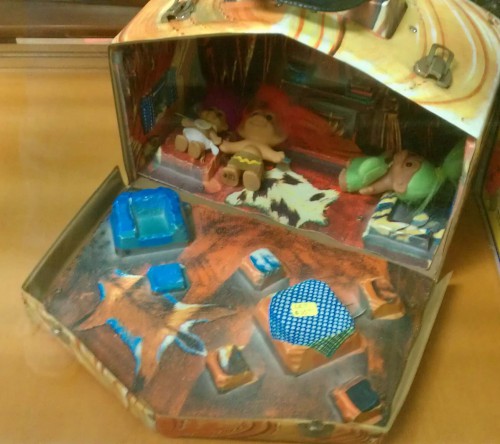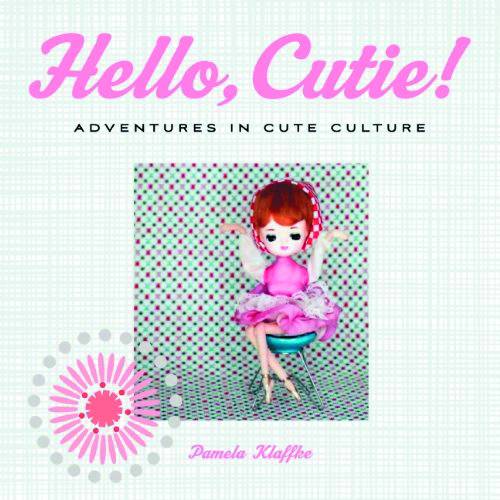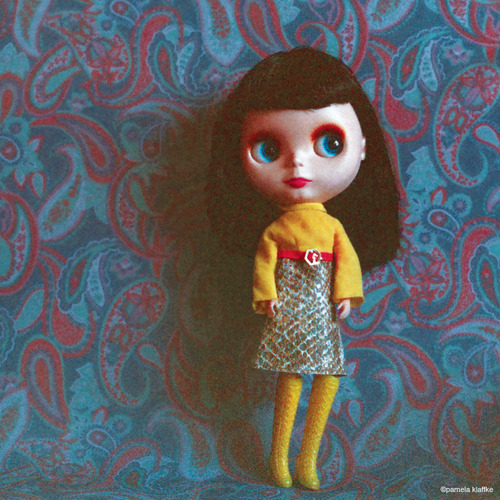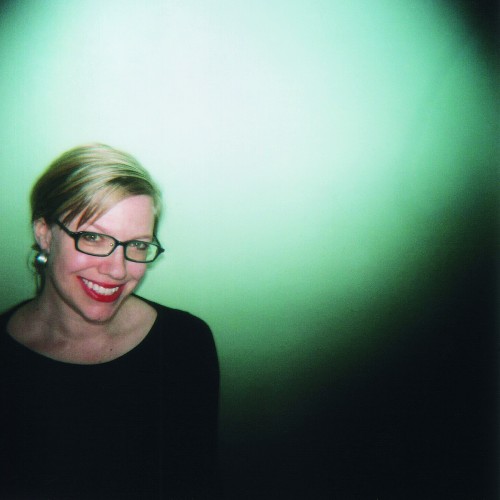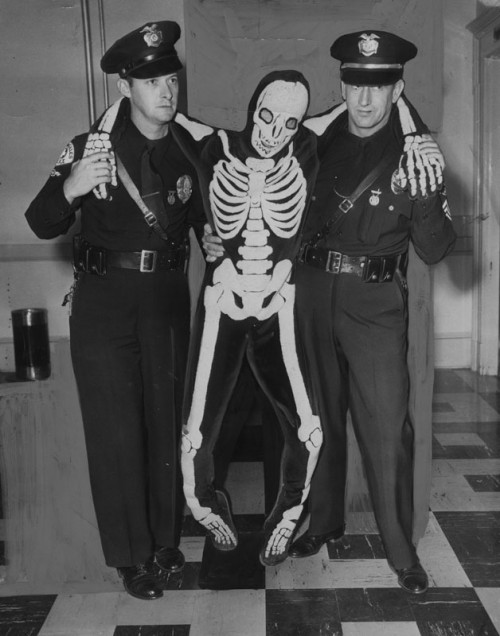Most definitely a “save the baby” post. A 1955 Jockey ad; via.
Tag: creepy
Modern Woman Mondays: It’s OK To Eat The Pink Elephants
OK, normally I save the food recipes for Things Your Grandmother Knew — but this? This is not food. …Technically edible; but not food. Plus, it involves pink elephants. And pink elephants are pretty darn kitschy. A recipe from a 1956 Wilton candy & food molds booklet:
“Pink Elephants”
These are fun to make and serve as a garnish on an Hors d’Ouevre Tray! Use the little elephants as socles or holders for toothpick appetizers (such as olives, cubes of cheese, miniature meat balls, etc.). Should the guest be inquisitive, he can just eat the elephants!”
Number one, I am surprised that last sentence doesn’t read, “Should The Guest be inquisitive” — because I hear that said with a sigh and an eyeball roll, like there’s always that one guest, aka The Guest.
And number two — and that may be a pun? — once The Guest gets that pink elephant socle on his tongue, he is not going to be happy. The ingredients are dry cream of wheat; salt; cold water (I am guessing the temperature is important); onion juice Worcestershire or Tobasco sauce, pepper or mustard; and food coloring. Ugh.
Well, at least I learned the word “socles.” Hey, I may be a lowbrow, low-class, kitsch lover; but even without knowing the name of those things I know better than to eat one of ’em.
Full “recipe” details below, which include options for “Tawny Tigers” and “Bears”. (Poor bears, they get no cute colorful name. …Though it does just beg for a crappy name anyway due to the emphasis on brown coloring for this pasty concoction.) Click for a bigger scan if you need it.
Practice Makes Perfect – We Hope
Toddler Jodhpurs
It may be too late for you to get your child into a pair of these this winter; but there’s always next year to make him or her freak out everyone else on the sledding hill. (Can you only imagine if they were knit from wool?!) From Fleisher’s Baby Book, Infants To 4 Years, Volume # 101; copyright 1957, Fleisher Yarns, Inc.
Hedda Get Bedda
For one of my eBay Guides — click here to find out more!
“This old world has some d— funny things in it”
We spent yesterday working our monthly dealer day at Exit 55 Antiques, where we found this postcard.
If interested, you can contact the shop at their official Facebook page — or call the store at (218) 998-3088, between 10 am and 5 pm (central time). Let them know this antique postcard was found in DT’s space, in a small wooden box (like a recipe box).
Tomato Buttermilk Pickup
Normally I save the vintage recipes for Things Your Grandmother Knew, but this one? Phew! It’s not much of a recipe (buttermilk and tomato juice, two-to-one), but is sure sounds disgusting. While you’re here, help yourself to a prune shake — recipe. (Via.)
Play Troll House
Here in Fargo, at Antiques On Broadway, there’s this fabulously kitschy vintage Troll house — it’s one of those vintage vinyl cases which opens into a house. Love it!
“Hello, Cutie!” The Interview
A few weeks ago, I had the great pleasure of reviewing a new release which explores the collectible culture of “cute”. …And maybe exploits the rise of cute in contemporary culture. But in a good way — I swear. Entitled Hello, Cutie!: Adventures in Cute Culture, the book was not only charming but so engaging that I just had to interview its author, Pamela Klaffke.
Hi, Pamela, what thrills me most about your book is the blend of “just because it’s cute” with the meatier discussion of “why it’s cute”. Maybe that’s because I’ve had to defend my kitsch and cute collecting so much… Was that always your vision for the book? And perhaps more importantly, as a collector of cute, do you find yourself examining or even defending “why” along the way?
The book is pretty close to what I originally imagined. At one point, there was discussion (with my publisher) of pushing it in more of a serious/academic direction, but we all agreed that the format we went with best suited the subject matter. We wanted it to be a fun read, a celebration of cute that also questions the whys and delves a bit into history and psychology. Plus, the voices of all the great people I talked to for the book really added a lot of life to it.
Regarding “defending cute,” I’ve been really lucky in the sense that I have rarely had to. I loved it as a kid and my Dad was always bringing me back cute stuff from his business trips to Asia, so it was always around and I never got any flack from my family. Many of my friends are fellow lovers of kitsch or cute and even the ones that aren’t can certainly appreciate the strangeness of it all (but only in the nicest possible way). My partner is an academic and even he thinks it’s super-fun. I also work from home and have for over almost 15 years, so there aren’t any co-workers around to give me suspicious looks.
In your book you discuss how you surround yourself with cute — in the sense that your cute objects are not all confined to one display of your “cute collectibles.” Do you consider them as one collection? Multiple collections?
I think of them as collections within a broader collection. I have various things neatly grouped on most of the available spaces in my home, but they’re not always grouped according to what they are. Right now, I have three vintage Japanese pose dolls sharing the shelf beside my desk with two Barbapapa figurines, a 1970s plastic gingerbread couple and two very weird-looking ceramic-and-fur dogs. I don’t like to keep anything behind glass or in cabinets — I want people who come over to feel comfortable picking items up and examining them if they wish.
Do you ever consider the financial value of your items, or is this all for the thrill of cute and the intrinsic value(s)?
I always look up what an item is selling for on eBay and Etsy after a thrift store score for fun and to satisfy my curiosity, but I rarely sell anything from my collection except the occasional duplicate. The vintage items I do sell on Etsy (textiles, sewing ephemera, and children’s books) are all bought specifically to sell. The aesthetic is pretty much the same as my own, but I like a clear division in my head.
What’s more fun: finding the items or owning them?
Do I have to choose just one option? The answer truly is both. I love the thrill of the hunt, but at the same time, when I’m stuck inside writing to a deadline, it’s always nice to look around and see all those cute faces staring back at me.
Of course you don’t need to chose one — I certainly can’t!
I realize one book, or even a series, cannot cover all there is about cute. But I did find a few aspects of cute missing… One was the idea of miniatures themselves as cute. (Aren’t cupcakes just miniature cakes?) I think women have been hardwired to find anything made in miniature adorable. Do you consider anything miniature to be cute, or is that a separate category?
I had very limited space and time to produce the book (I started researching and writing in January of this year so to say that the deadline was tight is a huge understatement). But as with any book with a word and page count goal, some topics don’t get as much coverage as others.
As for miniatures, I talk about miniaturization in the “I Want Candy” chapter so it is in there. Smaller is indeed cuter in some cases, but not all, and I don’t think it’s gender-specific (take the Japanese Iwako erasers for instance — those are collected by both men and women). It is a typical trait of cute, but from my research I didn’t find it needed a lot of explanation. It may be, too, that miniatures aren’t a specific interest of mine beyond Re-ment (which is in the book).
The other thing I would like to have seen in the book was a discussion of gender in collecting cute. Is there a gender disparity in collecting cute? Is there a growing male interest in cute?
Gender was a huge one I would have liked to have tackled. It’s a complex issue and would have needed an entire section to do it justice. I would have loved to talk more about gender, but it wasn’t realistic to add another section. Plus, we were very conscious about keeping the tone conversational and light and a treatise on gender politics and cute may have weighed the book down a bit, as it’s meant to be a celebration of cute rather than hardcore cultural analysis.
I would have to do more specific research into gender and cute to comment accurately about any disparities or potentially growing male interest in cute. I suspect there is an increase in men being into cute (Bronies — the guys who are proudly into My Little Pony immediately springs to mind), but can’t say for sure without research.
Do you have any plans for additional books, either in this area of cute or other areas of collecting?
I do. I am working on another book in a similar vein, but I’m not really in a position to speak about it yet. But gender will definitely be covered extensively!
***
Honestly, even without knowing more about her next project, I could have talked with Pamela all day. …Maybe for a week. (I didn’t even get to share photos of all my stuff with her! lol) I will be discussing more with Pamela soon though. We will be discussing collecting with her daughter (who is also into cute) over at Inherited Values; so stay tuned for a link to that interview to appear here. Meanwhile, if you or someone you love collects or coos over cute (or kitsch — or whatever you want to call it), Hello, Cutie!: Adventures in Cute Culture would make a downright adorable gift.
All the vintage looking photos above are from Pamela’s book. If you find them dreamy, you should check out her affordable prints at Pamela Klaffke Photography.
Mr. Statistic Scarier Than Mr. Yuck?
Two Los Angeles police officers help Mr. Statistic warn drivers about traffic fatalities on the upcoming Labor Day weekend in 1952. (Via.)
But is he more compelling than Mr. Yuck?
